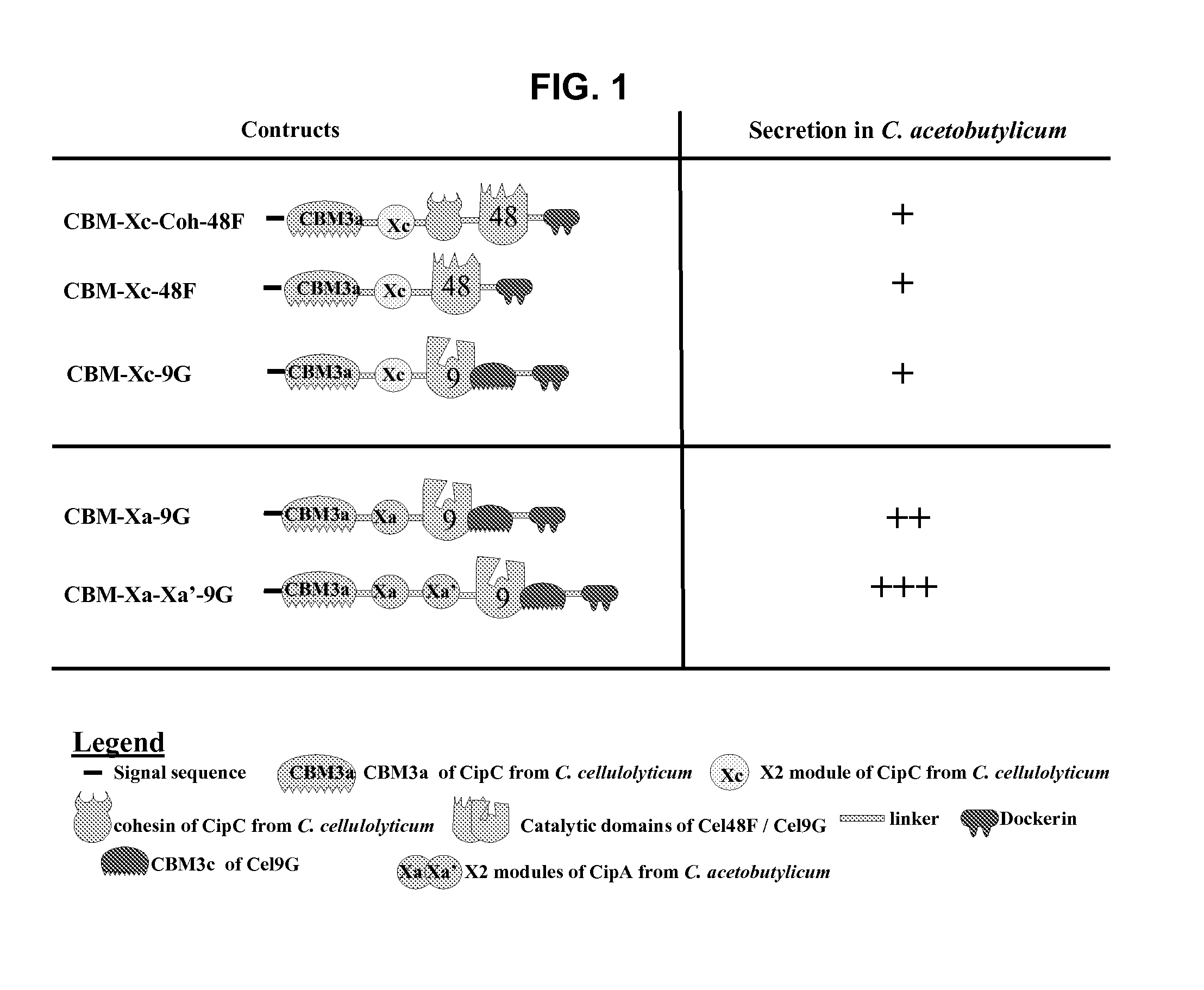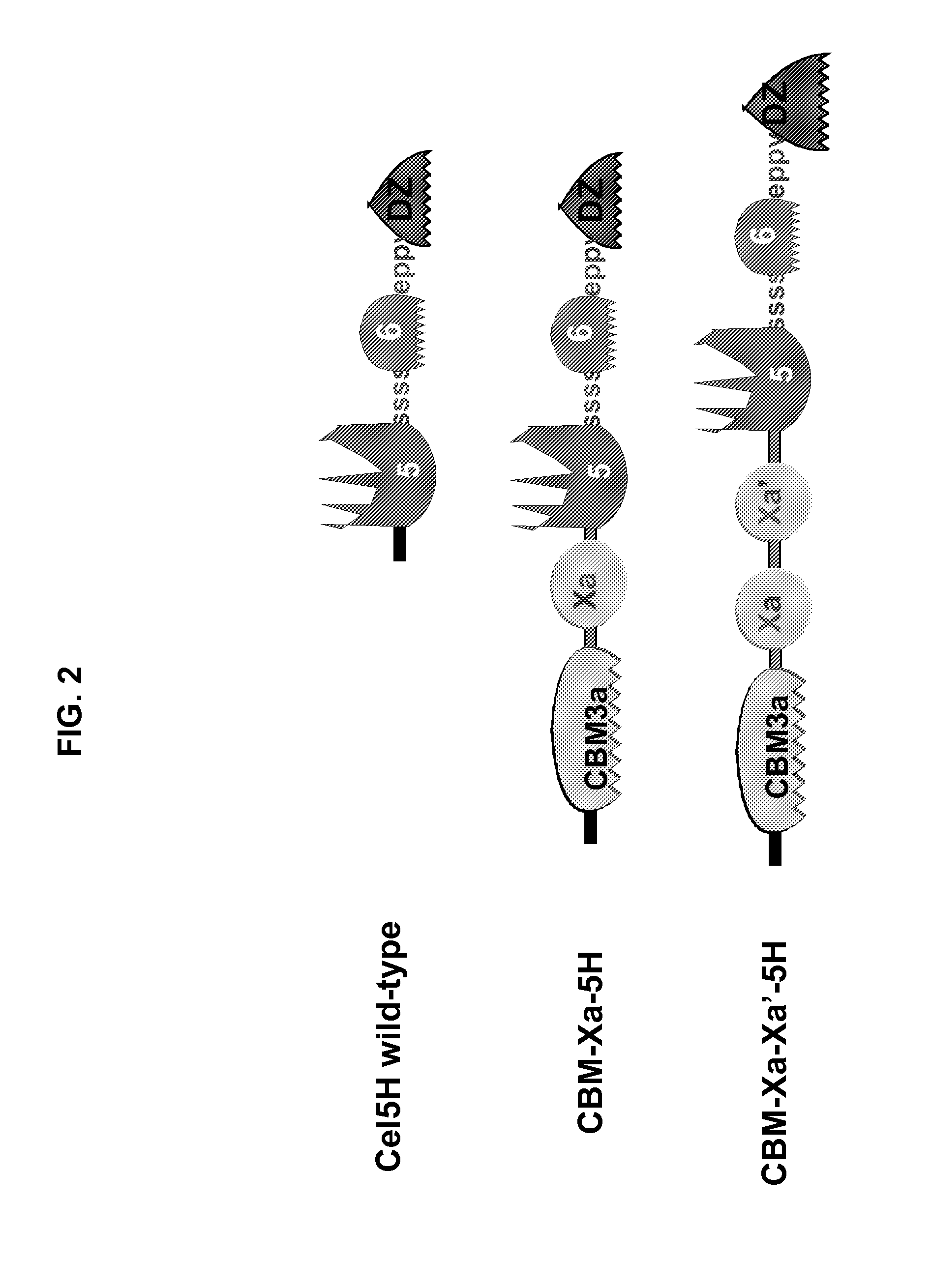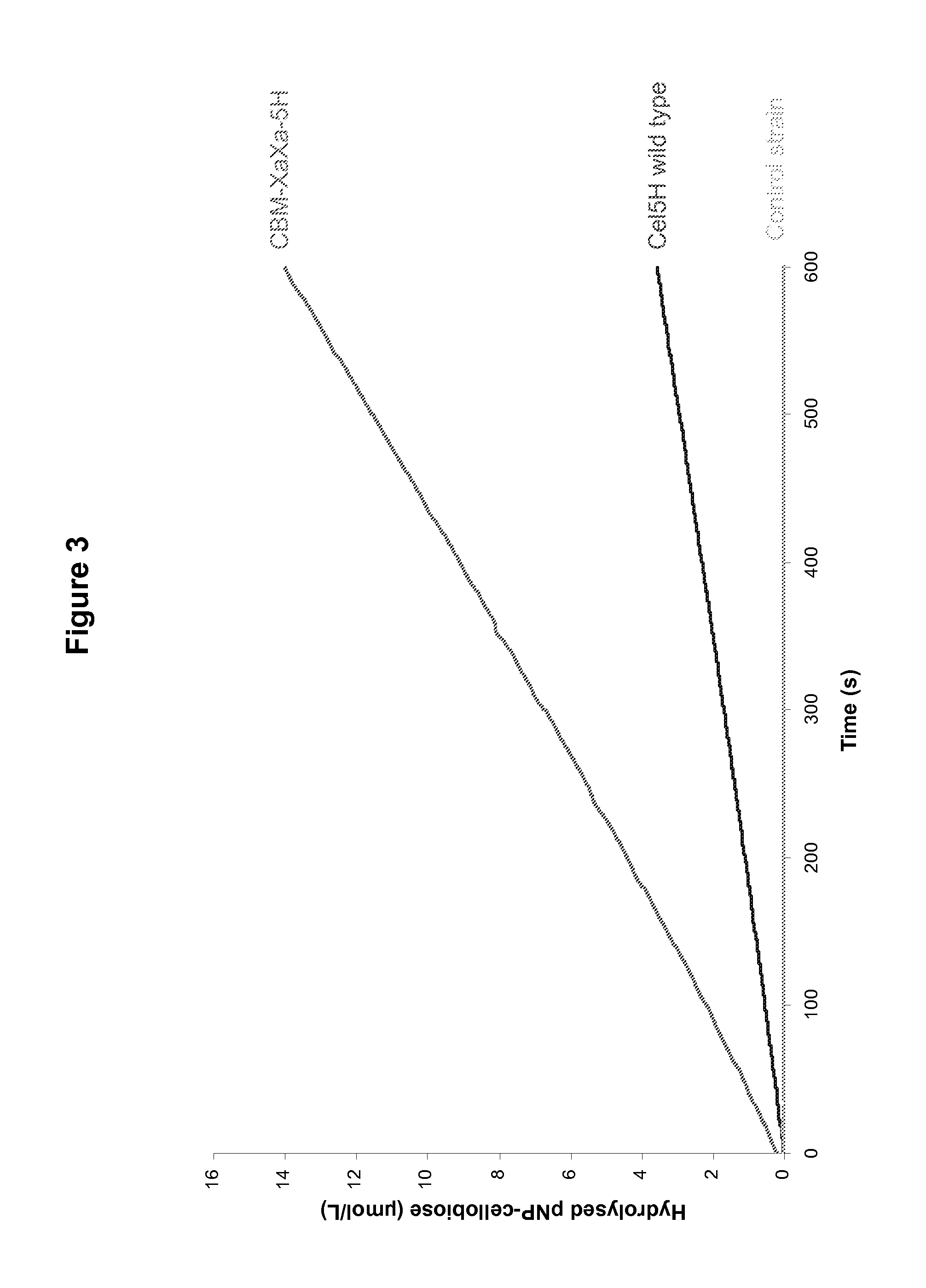Constructs and Methods for the Production and Secretion of Polypeptides
- Summary
- Abstract
- Description
- Claims
- Application Information
AI Technical Summary
Benefits of technology
Problems solved by technology
Method used
Image
Examples
example 1
Secretion of Heterologous and Toxic Cellulases
[0237]This example illustrates the secretion of polypeptides of interest, in particular the cellulases, by C. acetobutylicum in accordance with the present invention. Various constructions were made and the most relevant of these are schematically represented on FIG. 1.
[0238]In a first construct, the polynucleic acid encoding the cellulase Cel48F obtained from C. cellulolyticum, was fused to a polynucleic acid encoding a carrier domain and comprising the CBM3a module, the X module (Xc), and the cohesin 1 module of CipC of C. cellulolyticum The construct further contains the signal peptide of the CipC scaffolding protein of C. cellulolyticum. Suitable linker sequences are used to link the different modules to one another.
[0239]In a second construct, the polynucleic acid encoding the cellulase Cel48F obtained from C. cellulolyticum, was fused to a polynucleic acid encoding a carrier domain and comprising the CBM3a and one X module (Xc) of ...
example 2
Secretion of a Heterologous and Toxic Cellulase According to the Invention Using Multiple X Modules
[0246]This is another example illustrating the secretion of polypeptides of interest, in particular cellulases, by C. acetobutylicum in accordance with the present invention. Various constructions were made and are schematically represented on FIG. 1 (lower panel), wherein modules obtained from different scaffolding proteins were used.
[0247]In one construct the polynucleic acid encoding the cellulase Cel9G obtained from C. cellulolyticum, was fused to a polynucleic acid encoding a carrier domain and comprising the CBM3a obtained from the CipC protein of C. cellulolyticum and one X module (Xa) obtained from the CipA protein of C. acetobutylicum. The construct further contains the signal peptide of the CipC scaffolding protein of C. cellulolyticum. Suitable linker sequences are used to link the different modules to one another.
[0248]In a fifth construct the polynucleic acid encoding the ...
example 3
Improvement of the Secretion of a Heterologous Cellulase According to the Invention
[0251]This is another example illustrating the secretion of polypeptides of interest, in particular a cellulase from Saccharophagus degradans, by C. acetobutylicum in accordance with the present invention. Various constructions were made and are schematically represented on FIG. 2, wherein modules obtained from different scaffolding proteins were used.
[0252]In a first construct, the synthetic polynucleic acid adapted to C. acetobutylicum codon bias and encoding the cellulase Cel5H from Saccharophagus degradans, was fused to a polynucleic acid encoding a carrier domain and comprising the CBM3a module, the first (Xa) and the second (Xa′) X modules obtained from the CipA protein of C. acetobutylicum and the signal peptide of the CipC scaffolding protein of C. cellulolyticum. Suitable linker sequences are used to link the different modules to one another.
[0253]The domain structure of the native Cel5H poly...
PUM
| Property | Measurement | Unit |
|---|---|---|
| Therapeutic | aaaaa | aaaaa |
Abstract
Description
Claims
Application Information
 Login to View More
Login to View More - R&D
- Intellectual Property
- Life Sciences
- Materials
- Tech Scout
- Unparalleled Data Quality
- Higher Quality Content
- 60% Fewer Hallucinations
Browse by: Latest US Patents, China's latest patents, Technical Efficacy Thesaurus, Application Domain, Technology Topic, Popular Technical Reports.
© 2025 PatSnap. All rights reserved.Legal|Privacy policy|Modern Slavery Act Transparency Statement|Sitemap|About US| Contact US: help@patsnap.com



